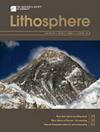Discovery of a Buried Active Fault to the South of the 1679 M8.0 Sanhe–Pinggu Earthquake in the North China Plain: Evidence from Seismic Reflection Exploration and Drilling Profile
IF 1.8
4区 地球科学
Q3 GEOCHEMISTRY & GEOPHYSICS
引用次数: 0
Abstract
This study focuses on the key structural locations to the south of the 1679 M8.0 Sanhe–Pinggu earthquake. In conjunction with prior deep seismic reflection exploration in the area, we conducted four shallow seismic investigations to the south of Sanhe–Pinggu seismic area to delineate the exact structure of identified faults and to ascertain the precise location, characteristics, and activity levels of active faults within the region. By analyzing the burial depth of the fault’s breakpoint as revealed by high-precision shallow seismic profiles, we postulate that the fault has been active since the middle and late Pleistocene epochs. In addition, we conducted a high-density borehole investigation in tandem with composite drilling profile at the corresponding sites of shallow breakpoints. Using chronological data from neighboring boreholes and accounting for the ages of samples acquired from these boreholes and staggered strata, the fault manifests as a Holocene active fault within the composite borehole–geological section. This study contradicted the previous conception that to the south of 1679 Sanhe–Pinggu seismic area contained no active faults. This new discovery not only has significant application value for evaluating the risk of large earthquakes in the southern part of the capital circle and understanding the earthquake disaster risk in Beijing but also has scientific significance for studying the development and evolution of faults and their deep–shallow coupling characteristics in North China since the late Cenozoic.在华北平原 1679 年 M8.0 级三河-平谷地震南侧发现埋藏活动断层:来自地震反射勘探和钻探剖面的证据
本研究的重点是 1679 年 M8.0 级三河-平谷地震南部的关键构造位置。结合之前在该地区进行的深层地震反射勘探,我们在三河-平谷震区南部进行了四次浅层地震勘探,以确定已识别断层的确切结构,并查明该区域内活动断层的确切位置、特征和活动程度。通过分析高精度浅层地震剖面显示的断层断点埋藏深度,我们推测该断层自更新世中、晚期开始活动。此外,我们还在浅层断点的相应位置进行了高密度钻孔调查和复合钻探剖面。利用邻近钻孔的年代学数据,并考虑到从这些钻孔和交错地层中获取的样本的年龄,该断层在复合钻孔地质剖面中表现为全新世活动断层。这项研究推翻了以往认为 1679 年三河-平谷地震区以南没有活动断层的观点。这一新发现不仅对评估首都圈南部大地震风险、了解北京地区地震灾害风险具有重要的应用价值,而且对研究华北地区晚新生代以来断层的发育演化及其深浅耦合特征具有重要的科学意义。
本文章由计算机程序翻译,如有差异,请以英文原文为准。
求助全文
约1分钟内获得全文
求助全文
来源期刊

Lithosphere
GEOCHEMISTRY & GEOPHYSICS-GEOLOGY
CiteScore
3.80
自引率
16.70%
发文量
284
审稿时长
>12 weeks
期刊介绍:
The open access journal will have an expanded scope covering research in all areas of earth, planetary, and environmental sciences, providing a unique publishing choice for authors in the geoscience community.
 求助内容:
求助内容: 应助结果提醒方式:
应助结果提醒方式:


